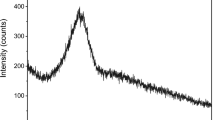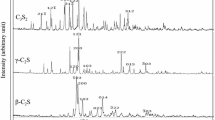Abstract
By means of “Mortar Bar Method”, the ratio of cement to aggregate was kept as a constant 1∶2,25 the water-cement ratio of the mixture was 0.40, and six prism specimens were prepared for each batch of mixing proportions with dimensions of 10×10×60mm3 at 38±2°C and RH≧95%, the influences of content and particle size of active aggregate, sort and content of alkali component and type of slag on the expansion ratios of alkali-activated slag cement (ASC) mortars due to alkali aggregate reaction (AAR) were studied. According to atomic absorption spectrometry, the amount of free alkali was measured in ASC mortars at 90d. The results show above factors affect AAR remarkably, but no dangerous AAR will occur in ASC system when the amount of active aggregate is below 15% and the mass fraction of alkali is not more than 5% (Na2O). Alkali participated in reaction as an independent component, and some hydrates containing alkali cations were produced, free alkalis in ASC system can be reduced enormously. Moreover, slag is an effective inhibitor, the possibility of generating dangerous AAR in ASC system is much lower at same conditions than that in ordinary Portland cement system.
Similar content being viewed by others
References
H G Smolozyk. Slag Cement and Alkali-active-aggregate.The Sixth International Proceedings on Cement Chemistry. 1980, 3:57–60
L X Yang. The Proceedings of Alkali-activated Slag Cement of the Former Soviet Union.Cement (inChinese), 1992, (8): 40–44
C J Shi. A Study on Alkali-aggregate Reaction of Alkali-slag Cement.Concrete and Cement Products (in Chinese), 1988, (4): 14–16
P M Gifford, J E Gillott. Alkali-silica Reaction (ASR) and Alkali-carbonate Reaction (ACR) in Activated Blast Furnace Slag Cement (ABFSC) Concrete.Cement Concrete Research, 1996, 26: 21–26
P Y Yan and W Y Yang. Mechanical Properties and Microstructure of Composite Binders Composite Shale Ash and Fly ash.Journal of Wuhan University of Technology—Mater. Sci. Ed., 1998, 13(4): 1–8
J Metso. The Alkali-aggregate Reaction of Alkali-activated Finish Blast Furnace Slag.Silicate Industries, 1982, 47: 123–128
Chen Youzhi, Pu Xincheng. Hydration Characteristics of Sodium Sulfate Slag Cement System.Journal of Wuhan University of Technology—Mater. Sci. Ed., 2001, 16(4): 45–47
Author information
Authors and Affiliations
Additional information
CHEN You-zhi: Born in 1969
Funded by the Science Foundation of the Science and Technology Department of Hubei Province (No. 200029031) and the Excellent Youth Foundation of Wuhan Science and Technology Commission (No.20025001010)
Rights and permissions
About this article
Cite this article
You-zhi, C., Xin-cheng, P., Chang-hui, Y. et al. Alkali aggregate reaction in alkali slag cement mortars. J. Wuhan Univ. Technol.-Mat. Sci. Edit. 17, 60–62 (2002). https://doi.org/10.1007/BF02838542
Received:
Issue Date:
DOI: https://doi.org/10.1007/BF02838542




